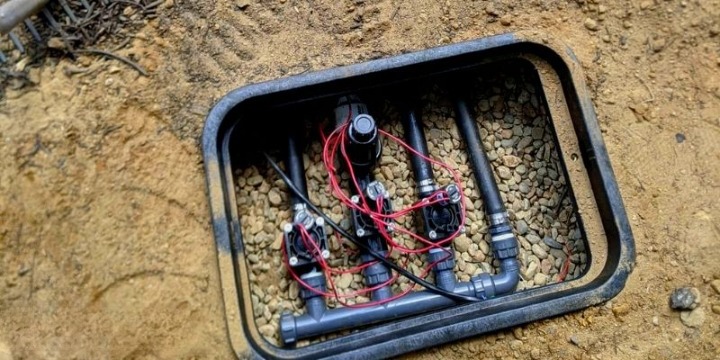How to Prevent Water Damage to Your Sprinkler Valve Box Like a Pro!

The sprinkler system provides the convenience of not having to manually water the yard. However, if the sprinkler valves aren’t maintained, they can become dirty and soaked. We’ve put up a brief maintenance guide that will show you how to avoid such predicaments by maintaining a dry environment for your sprinkler valve box.
We have covered not only the preventative measures you can take to ensure that water does not collect in your sprinkler box, but also the reasons behind this and the best practices for maintaining your sprinkler system to ensure it lasts as long as possible.
If you see it through to the conclusion, you could be motivated to fix minor issues on your own instead of always calling a repairman.
Table of Contents
Wet Sprinkler Valve Box: How to Prevent It
Sprinkler valves are among the most water- and dust-prone parts of a garden. That’s why they’re designed to a certain extent to keep out grime and safeguard the components inside, including the electronics. Therefore, even minimal maintenance on this system can yield substantial results.
So, if water or mud gets inside your sprinkler box, it won’t cause any problems beyond the need to clean it out during maintenance. However, there are several preventative actions you may take to either maintain or lower the amount of moisture that enters your system.
Avoiding Wetness Around The Sprinkler Valve
In what ways can water be removed from a valve box?
Taking the aforementioned preventative precautions will make maintenance after installation much easier. Even so, they are not sufficient to prevent your apparatus from being submerged or soaked. Furthermore, you don’t want the water in the sprinkler valve box to sit there for too long.
As a result, we’ll go through several strategies for water drainage that can help mitigate the effects of floods and other similar catastrophes.
If water is pooling above the sprinkler valve box, what could be the cause?
Your valve box may become obstructed by water entry from a variety of sources. Here’s an example:
To prevent internal flooding of your sprinkler system, try the methods we outlined above for sealing off the irrigation control panel.
Questions And Answers
Why is there water collecting in my sprinkler system’s control panel?
If your garden or lawn has an adequate drainage system, but water remains in the sprinkler valve box, examine the firmness of the O-ring and replace it if necessary. If you don’t see any visible signs of leaking, examine the valves and pipe connections and take the appropriate measures as outlined in our manual.
If the sprinkler valve box is to be used, should it be filled with water?
Sprinkler valves have a limited water resistance. However, twice-weekly draining of water can mitigate the gradual deterioration of sprinkler parts. If you want to prevent frozen pipes or valves in winter, follow our advice and drain the standing water more frequently.
Sprinkler shut-offs: wet or dry?
The sprinkler valves can become wet without affecting their performance. However, if you want your sprinkler valve to last as long as possible, you should follow our instructions to minimize or eliminate the water exposure and wear and strain that they experience.
In Conclusion
It doesn’t take a professional to follow the steps and precautions for avoiding water damage to a sprinkler valve box. In contrast, the minor work involved in upkeep much outweighs the complexity of replacing or installing an entire sprinkler system.
As a result, we expect this manual will deepen your familiarity with sprinkler valve boxes and pique your interest in keeping them in good working order. Stay safe and sound until we return with a new guide.







